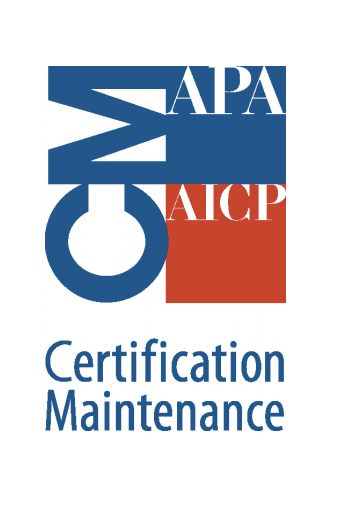The National Hazard Mitigation Planning Program, in partnership with the Emergency Management Institute (EMI), offers a suite of fundamental trainings designed to help state, local, tribal and territorial governments create effective hazard mitigation plans that meet FEMA’s requirements and reduce risk in their communities. As each of these audiences has different requirements, each training is specifically tailored to them.
Additionally, the program offers several advanced trainings and technical assistance related to pertinent areas in hazard mitigation planning. These range from webinar recordings to on-demand workshops.
Mitigation Planning YouTube Playlist
Find all of the Mitigation Planning webinars in one convenient playlist.
View Playlist
Search Trainings

Rất tiếc là không có kết quả nào dựa trên các lựa chọn bộ lọc của bạn.
Vui lòng đặt lại bộ lọc hoặc thay đổi các lựa chọn của bạn và thử lại.
AICP Credits
Courses are eligible for American Institute of Certified Planners Certificate Maintenance in addition to other webinar or in-person workshops. Find eligible options by using the “CM Search” section on APA and searching for "Federal Emergency Management Agency".

Members of the American Planning Association’s American Institute of Certified Planners can earn Certification Maintenance credits for many of FEMA’s mitigation planning trainings, including IS-350, L/K 318and IS and L-329. When credits are available, they are noted at the end of an activity description. More information can be found at planning.org/cm.

The mitigation planning process is slightly different for each state and local, tribal and territorial government. Regardless of the plan type, there are four core steps in completing a hazard mitigation plan or plan update.
Tools and Resources
- HAZUS: A risk modeling system that estimates the physical, social, and economic impacts from earthquakes, floods, hurricanes, and tsunamis.
- National Risk Index: An online modeling application that visually depicts risk from 18 natural hazards in addition to socioeconomic and built environment factors. The Index calculates a baseline risk measurement for each United States county and U.S. Census tract to help communities better understand their natural hazard risk.
- A Guide to Supporting Engagement and Resiliency in Rural Communities discusses outreach and engagement activities, including mitigation planning, that address rural communities’ needs and considerations.
- PrepTalks: Jan Peelen “Living with Water: How the Netherlands Prevents Flood Disasters" Symposium date: September 19, 2019. In his PrepTalk, Jan Peelen tells the story of the Netherland’s historic battle with flooding and shares how the Dutch are learning to live with water.
- PrepTalks: Stuart Tom "Using Codes and Standards to Build Resilient Communities. Symposium date: April 23, 2019. In his PrepTalk, Stuart Tom explains the importance of building codes and well-constructed buildings, how codes and standards are developed, adopted and enforced by jurisdictions and how the community can be involved in the process.
- PrepTalks: Dr. Philip Berke “Planning for Community Resilience. Symposium date: January 29, 2018. Dr. Philip Berke’s PrepTalk explains how effective land use planning can reduce vulnerabilities and strengthen community resilience.
External Resources
- American Planning Association (APA) “Planning, Mitigating, and Advocating for Community Resilience”: This free course, developed with input from FEMA, helps community planners know their role in hazard mitigation. It shows how mitigation planning boosts community resilience. This course also covers how to use planning tools as mitigation actions. Community planners will learn how to engage with the planning process. They will also learn how to work with their emergency management colleagues, help assess risk, and advocate for a more resilient future. This course is eligible for 1.75 CM credits for American Planning Association members of the American Institute of Certified Planners (AICP).
- U.S. Environmental Protection Agency (EPA) training, “Creating Co-Benefits Through Hazard Mitigation Planning and Water Resource Management”: The web-based training, developed with input from FEMA, supports water quality and hazard mitigation professionals in integrating water quality issues, water resource management, and nature-based practices into state or local hazard mitigation plans. Modules in this series can be used as training tools to help planners from both worlds explore activities of mutual interest and benefit. Case studies and real-world examples are provided to demonstrate to hazard mitigation planners how to connect with water resource programs through hazard mitigation planning and to help watershed planners understand the synergies between water resource plans and mitigation plans.
- U.S. Department of Housing and Urban Development Community Resilience Toolkit: The Resilience Toolkit is designed to assist communities in enhancing their resilience to climate-related natural hazard risks.
- National Institute of Standards and Technology (NIST) Community Resilience Resources: The NIST Community Resilience Playbook instructs how to set community goals, align priorities and resources, identify key stakeholders and develop recovery plans. The two-volume NIST Community Resilience Planning Guide helps communities improve their resilience by setting priorities and allocating resources to manage risks.
- MGT-474: Mitigating Hazards with Land-Use Planning: This one-day (or 8-hour) management-level training course, offered by the National Disaster Preparedness Training Center, aims to improve hazard mitigation through the implementation of land-use planning tools. The course provides training on the integration of hazard mitigation and land-use planning efforts and on choosing land-use tools that address different natural hazard challenges. The course covers both community-scale land-use planning tools, like comprehensive plans and hazard mitigation plans, as well as site-scale tools like setback requirements and transfer of development rights (TDR) programs. This course can be offered virtually or in-person by request. For more information, please contact ndptc-operations@lists.hawaii.edu.

